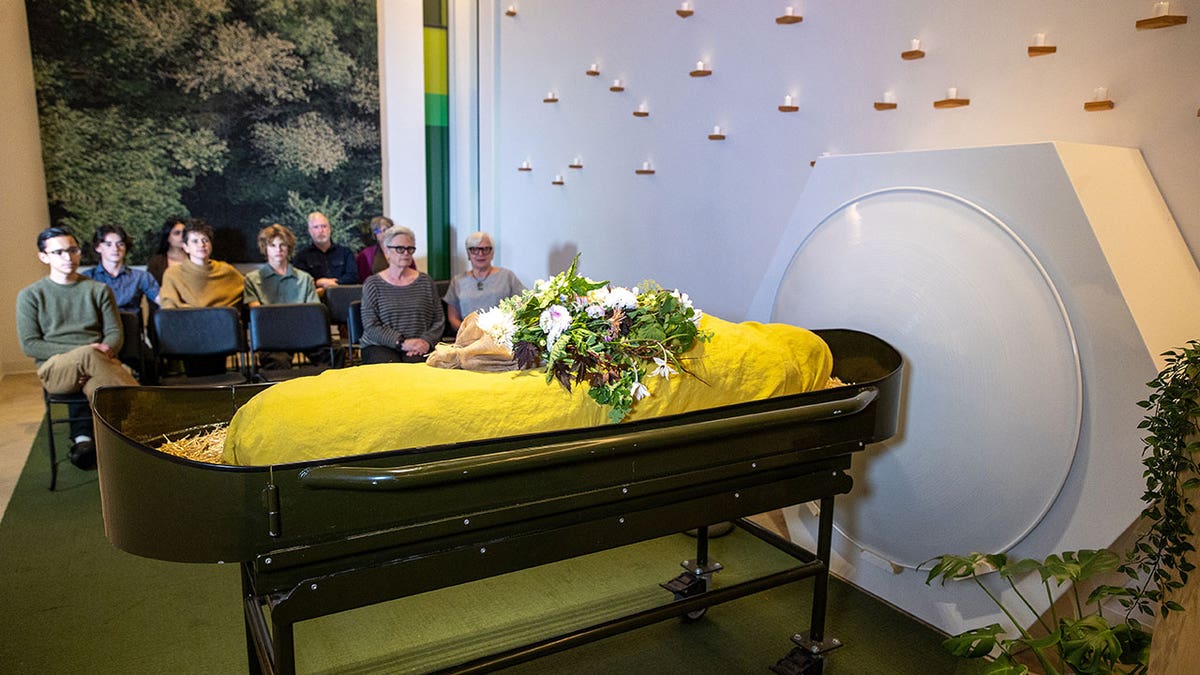What’s wrong with green energy?
Energy consumer Curtis Jarvis reflects on his solar panels he claims he was tricked into buying on ‘Jesse Watters Primetime.’
The push for environmental consciousness has sparked the rise of not only green energy initiatives, but now also the move to "green burials" or "human composting" practices over more traditional methods.
Gaining increasing popularity over the last few years, green burial practices leave little to no environmental impact, with "complete decomposition of the body and its natural return to the soil thus encouraging new growth and restoration of ecosystems," according to the Funeral Consumers Alliance. Additionally, unlike traditional burials that use toxic chemicals, only biodegradable substances are used during the burial process.
In 2019, Washington became the first state to allow human composting, followed by Colorado, Oregon, Vermont, California and New York
Traditional burial procedures use the chemicals formalin, methanol and benzene, among other toxins, during the embalming process, which critics say have a harmful impact on soil, water systems and the body.
NEW YORK BEOCOMES THE 6TH US STATE TO GREEN LIGHT HUMAN COMPOSTING LAW
According to the National Funeral Director's Association, in 2022, 60.5% would be interested in "green" funeral options, up from 55.7% the prior year.

Guests sit in the gathering space looking at a shrouded mannequin in front of the threshold vessel at Recompose, a green funeral home specializing in human composting, also known as natural organic reduction, terramation, or recomposition at Recompose Seattle on October 06, 2022 in Seattle, Washington. (Mat Hayward/Getty Images for Recompose)
In addition to an interest in moving towards greener practices, the cost of a green burial is often significantly less that a traditional burial, which on average costed people $7,848 in 2022.
In contrast, according to U.S. Funerals Online, the cost of human composting practices can range from $4,000-$5,500, saving consumers a few thousand dollars on death procedures. Green burials, on the other hand, can range from $500-$5,000, varying largely based on the cemetery in question and whether funeral director services are used.
While both methods promote natural decomposition, the difference between a green burial and human composting is that human composting decomposes a body in a closed, reusable vessel, while a burial is the placement of an unembalmed body in a designated green burial cemetery.
The market for green funeral processes is only expected to grow in the coming years. With a market share of roughly $571 million in 2021, the compound annual growth rate of green burial practices is expected to be 8.7% until 2030. In 2021, human composting reportedly accounted for the largest global revenue share.
At Return Home Terramation, a human composting service based in Washington State, the process begins with laying the body onto a table for the family to view, if desired. The body then gets bathed by one of the faculty members before being dressed in a custom-made, compostable garment. Afterwards, the body is moved to their composting vessel, where family members are able to gather and place letters, cards, or other compostable memorabilia for their loved ones into the box. The body is then covered with the remaining organics needed for compost and is left to turn into soil, lasting roughly 30 days or less.
The soil is then screened for inorganic material and placed into a cube to rest and cool for another 30 days. After this, the "life-giving" soil then either returns to the family or is scattered at The Woodland.
"Our process is the most transparent, gentle, and ethical, showing love and kindness to everyone that comes to our facility," their website explains. "The Terramation process ensures your last act on earth is one that gives back to it by returning life-giving soil to the earth."

